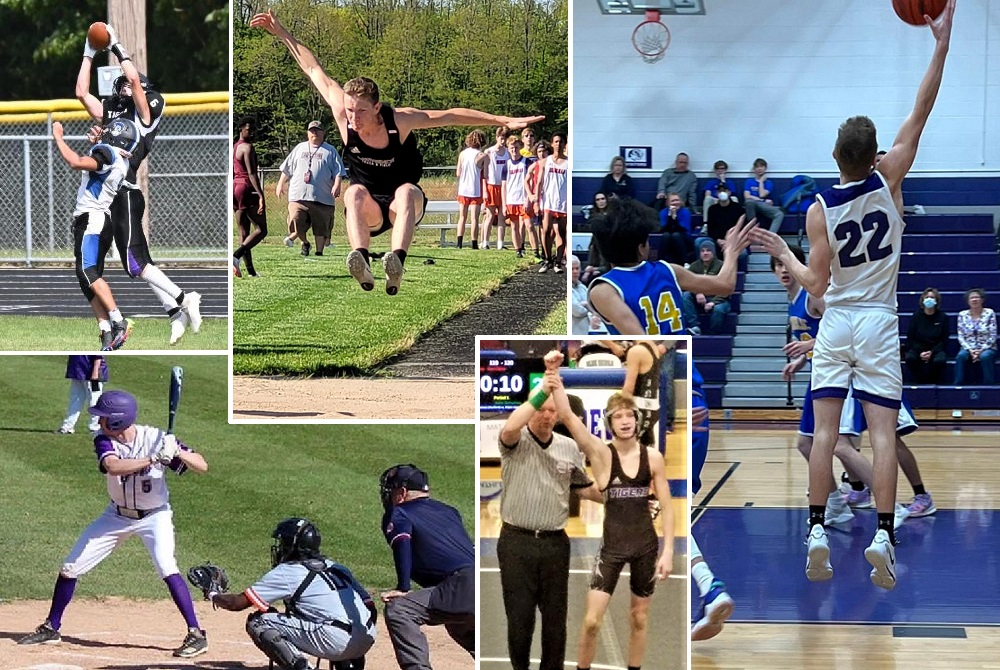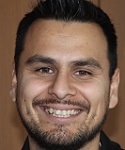
Before the Bridge: Class E & the UP
July 31, 2017
By Ron Pesch
MHSAA historian
This is the final part in a series on MHSAA tournament classification, past and present, that has been published over the last two weeks and originally ran in this spring's edition of MHSAA benchmarks.
The stories are worthy of the silver screen.
Long lost legends of lore, forgotten by most in the Lower Peninsula of the state of Michigan.
Absurd anecdotes of basketball played behind glass, and out-of-bounds lines painted on walls.
Tales of overlooked places like Trenary and Champion and Doelle and Watersmeet.
This is the story of MHSAA Class E basketball.
From 1932 to 1947, Michigan's Upper Peninsula did not compete in the state-sponsored basketball tournament. Instead, the U.P. held a separate basketball tournament, crowning champions in Classes B, C and D. In 1941, the state added a fifth classification – Class E, comprised of schools with a student body numbering 75 or fewer. A fourth bracket was added to the U.P. tourney.
Following the 1948 season, the Upper Peninsula returned to the state tournament. Winners of the traditional U.P. tourney were pronounced regional champions, and advanced to the state quarterfinals in Classes B, C and D. However, since there were no Class E schools with basketball teams in the Lower Peninsula, the winner of the U.P. tournament crown was proclaimed Class E state champion. This arrangement continued through the spring of the 1960 season.
Since they were the state's smallest high schools, the gymnasiums came in all shapes and sizes. Some sported a center circle that intersected with the top of the key. Basketball courts that doubled as a stage required netting to keep the kids and the ball on the court and away from the audience seated below.
Fred Boddy, a former coach at Champion, recalled his first visit to Doelle. Located in copper country near Houghton, the hosts were the proud owners of “the smallest” gym in U.P.
“I couldn't believe my eyes. ... Here on the second floor were windows and bleachers all around filled with fans. The gym, of course, was located on the first floor, but to get into the gym one had to go around to the back of the school to enter through the boiler room to the locker rooms, which opened onto the gym floor much like a dugout on a baseball field. The players sat on a bench under the wall and could look out and see the game in this manner. The free throw lines intersected and there were no out of bounds lines... the wall itself was ‘out of bounds.’ On the floor during the game were 10 players and two referees. There were no sounds as all the fans were up on the second floor, glassed in.
The cheerleaders tried valiantly to fire up the fans up on the second floor, but the teams couldn't hear in the quiet below. The score clock and statistician personnel were placed in a corner box high over the floor in one corner of the gym. They attained this lofty perch by a ladder that was removed from the trap door after all three were in position and the game could thus commence. The timer then tied a rope around his ankle. To send a sub into the game the coach would send the player along the wall heading for this rope. He would pull the rope causing the timer to look down through the trap door and at next opportunity would ring the buzzer and admit this substitute”
Regardless of the challenges presented by these cracker-box gyms, the fans loved their basketball. “The enthusiasm was just the same, if not bigger, than schools twice and 10 times their size,” noted longtime U.P. historian, Jay Soderberg.
Coach Joseph Miheve's 1941 Palmer squad captured the state's first Class E title with a 39-28 win over Hulbert at Ironwood. A graduate of Wakefield High School, Miheve had never played high school basketball, serving as the team's manager.
The 1942 tournament, scheduled for March 19-21, was postponed one week because the city of Marquette was more or less taken over “by nearly 1,000 selective service registrants from every county in the Upper Peninsula” who had another and more serious battle in mind – World War II.
Palmer, this time coached by Elvin Niemi, repeated in Class E with a 37-31 victory over Bergland. It was Palmer's 32nd consecutive victory.
No tournament was held in 1943 due to the involvement of the United States in the war. In the 1944 championship game, Cedarville jumped out to a 19-14 first quarter lead but was held to 24 points in the remaining periods and fell to Amasa, 51-43 at Ishpeming.
Trenary made its lone Class E finals appearance in 1945, losing to Bergland 49-39 at Ishpeming, while the Alpha Mastodons won their first U.P. title since 1934 with a 48-28 win over Champion in 1946. It was the second of five Class E titles for Alpha coach Gerhardt “Gary” Gollakner, one of the finest coaches to come out of the U.P. Gollakner had coached at Amasa two years earlier, and his Mastodons would earn three additional titles during the 19-year run of the Class E championships.
Bergland became the tourney's second two-time winner in 1947, with a 40-37 win over the Perkins Yellowjackets. Perkins made four trips to the Class E finals over the years, including an appearance in the final year of the tournament, but came away empty-handed each time.
The Nahma Arrows made their first appearance in the championship in 1951, losing to Michigamme. Led by coach Harold “Babe” Anderson, a cage star at Northern Michigan College during the early 1940s, the Arrows returned to the finals in 1952. Nahma finished the year with a 21-0 mark and a 64-44 win over Marenisco for the crown.
 The two teams met again in a finals rematch the following year. The scored was tied six times, while the lead changed hands seven times in this barnburner. With 15 seconds to play, Nahma led 64-60. Marenisco's Robert Prosser hit a jump shot, then teammate Bill Blodgett stole a pass and scored to knot the game at 64. With two seconds remaining, Nahma's Bernard Newhouse was fouled. Newhouse hit the first free throw, but missed on the second. Teammate Wendell Roddy tipped in the rebound, and the Arrows had their second title.
The two teams met again in a finals rematch the following year. The scored was tied six times, while the lead changed hands seven times in this barnburner. With 15 seconds to play, Nahma led 64-60. Marenisco's Robert Prosser hit a jump shot, then teammate Bill Blodgett stole a pass and scored to knot the game at 64. With two seconds remaining, Nahma's Bernard Newhouse was fouled. Newhouse hit the first free throw, but missed on the second. Teammate Wendell Roddy tipped in the rebound, and the Arrows had their second title.
Alpha returned to the championship circle in 1954 with a 52-48 win over Perkins.
The 1955 title game matched a pair of the finest teams in Class E history. Trout Creek, making its first championship appearance, downed Alpha 84-83 in another Class E thriller. Don Mackey led the winners with 39 points. Tony Hoholek paced Alpha with 31, while junior John Kocinski added 21-points for the Mastodons.
Kocinski, a four-year starter at Alpha, scored 1,782 points during his career, then an all-time U.P. record. He once scored 51 points against Amasa, and could have scored more according to teammate Walter “Slip” Ball. “He refused to shoot in the fourth quarter, and passed up one shot after another,” Ball said.
Without question, Trout Creek was one of the powerhouse squads during the final years of the tourney. The Anglers, coached by Bruce “Pinky” Warren, a former captain of Purdue's football team, made four trips to the finals during the last six years of the Class E tourney. The defending champions downed Alpha in the semifinals of the 1956 tournament, then knocked off Hermansville 86-68 in the finals to repeat. It was a year of celebration for fans of U.P. basketball, as four of the state's five champions – Stephenson (B), Crystal Falls (C), Chassell (D) and Trout Creek (E) – came from Michigan's northern peninsula.
Hermansville returned to the finals in the spring of 1957 and earned its second Class E title with a 77-51 win over Michigamme at Escanaba. Trout Creek downed Perkins 61-41 for their third crown in 1958.
The 1959 championship, hosted at Northern Michigan College's fieldhouse, was a showdown of the U.P.’s only undefeated squads, Trout Creek and Nahma. Trout Creek was riding a 24-game winning streak that dated back to the 1958 season. A scoring machine, Warren's Anglers averaged 81.7 points per contest. Nahma, 19-0 on the season, boasted the U.P.'s strongest defense. Still coached by “Babe” Anderson, the Arrows had allowed an average of 38.2 points per game. Led by senior Warren Groleau, Nahma had been last defeated by Trout Creek in the semifinals of the 1958 tourney.
Leading 25-15 at the intermission, Nahma matched Trout Creek point for point in the second half for a 55-45 victory.
Hermansville, behind Richard Polazzo's 29 points and Irwin Scholtz's 27, downed surprise finalist Perkins 72-50 in the 1960 finale, to end this chapter in MHSAA history.
Today, most of the former Class E high schools are long gone. Many have closed their doors and consolidated with other area schools. Amasa and Alpha merged with Crystal Falls to form Forest Park. Palmer is now part of the Negaunee school system. Bergland and Trout Creek joined forces with Class D Ewen to form Ewen-Trout Creek. Hermansville combined with Powers to form North Central, to name but a few. A few remain: Dollar Bay, Marenisco (now Wakefield-Marenisco) and Watersmeet, and their enrollments are much the same as in the glory days of the state's fifth classification.
Author’s note: Special thanks to Jay Soderberg and Roger Finlan, who assisted in gathering statistics and quotes used in this article. Thanks also to Dick Kishpaugh, Bob Whitens, Walter “Slip” Ball, Dennis Grall, Fred Boddy, Bruce Warren, Gene Maki, Harold “Babe” Anderson and the various personnel at U.P. high schools for their contributions to this story.
PHOTOS: (Top) The Alpha boys basketball team won the 1950 Class E title by nearly doubling up Michigamme, 52-28. (Middle) Hermansville claimed the 1948 title with a 58-38 win over Rockland.

Lawrence's Schuman Sets Example for Well-Rounded Success
By
Pam Shebest
Special for MHSAA.com
December 14, 2022
LAWRENCE — If redshirting was a thing in high school, at least two coaches at Lawrence would stick that label on senior John Schuman.
 “We don’t want to lose this kid ever,” said Derek Gribler, the Tigers’ first-year varsity football and baseball coach.
“We don’t want to lose this kid ever,” said Derek Gribler, the Tigers’ first-year varsity football and baseball coach.
“If we could put a red shirt on this kid every year, we would.”
Athletic director John Guillean, who also coaches varsity basketball, agreed.
“He is what we strive to have all our student-athletes achieve: high GPAs, multi-sport athletes, good, overall well-rounded human beings,” Guillean said.
Schuman has participated in five of the seven boys sports Lawrence sponsors.
As a freshman and sophomore, Schuman played football, wrestled, ran track and played baseball.
He had wrestled since he was 4, and went from the 119-pound weight class as a freshman to 145 the following year. That sophomore season he qualified for his Individual Regional. But as a junior, he traded wrestling for basketball.
“My older brother wrestled at Lawrence, so I would come to practices,” he said. “I quit for a couple years (in middle school) because I liked basketball, too. It was hard to do both. Obviously, in high school, I still struggled with choosing,” he added, laughing.
 Guillean is thrilled Schuman made the switch.
Guillean is thrilled Schuman made the switch.
“He’s 6-(foot-)4, he’s super athletic, defensively he’s a hawk, offensively he can put the ball in the bucket. But really, aside from his skills, just that positive attitude and that positive outlook, not just in a game, but in life in general, is invaluable,” the coach said.
Last season, Schuman earned honorable mention all-league honors in the Berrien-Cass-St. Joseph Conference, averaging 9.1 points and 9.1 rebounds per game.
Lawrence left the BCS for the Southwest 10 Conference this year, joining Bangor, Bloomingdale, Hartford, Decatur, Comstock, Marcellus, Mendon, Centreville, White Pigeon and Cassopolis. Schuman and senior Tim Coombs will co-captain the Tigers, with Guillean rotating in a third captain.
At a school of fewer than 200 students, Schuman will help lead a varsity team with just nine – joined by seniors Andy Bowen and Gabe Gonzalez, juniors Christian Smith, Noel Saldana, Ben McCaw and Zander Payment, and sophomore Jose Hernandez, who will see time with the junior varsity as well using the fifth-quarter rule.
“I attribute a lot of (last year’s successful transition) to my coach, helping me get ready because it wasn’t so pretty,” the senior said. “But we got into it, got going, and my teammates helped me out a lot.”
Great anticipation
Gribler is one coach already looking ahead to spring sports after seeing what Schuman did during football season.
In spite of missing 2½ games with an injury, the wide receiver caught 50 receptions for 870 yards and 11 touchdowns.
“I just like the ability to run free, get to hit people, let out some anger,” Schuman laughed.
 Gribler said the senior is “an insane athlete.
Gribler said the senior is “an insane athlete.
“On top of his athletic ability, how smart he is in the classroom (3.88 GPA), he helped mold the culture we wanted this year for football. He got our underclassmen the way we wanted them. He was a big asset in many ways.”
Schuman earned all-conference honors for his on-field performance in football as well.
“I would say that my main sport is football,” the senior said. “That’s the one I like the most, spend the most time on.”
In the spring, Schuman competed in both track and baseball, earning all-conference honors in both.
“Doing both is tough,” he said. “I have to say my coaches make it a lot easier for me. They help me a lot and give me the ability to do both, so I really appreciate that.
“Throughout the week you’re traveling every day, it seems like. Baseball twice a week and track, but it’s worth it.”
Schuman’s commitment is so strong that he made a special effort not to let his teammates down last spring.
“He qualified for state in the long jump and did his jumps up in Grand Rapids, then he drove all the way to Kalamazoo to play in the District baseball game,” Guillean said. “That speaks volumes about who this kid is. He did his jumps at 9 a.m. (but did not advance) and made it back to Kalamazoo for a 12:15 game.”
Big shoes to fill
As the youngest of four children of Mark and Gretchen Schuman, the senior was following a family tradition in sports.
Oldest brother Matthew played football, basketball and baseball as well as competed in pole vault and wrestling.
Middle bother Christopher competed in football, wrestling and baseball.
Sister Stephanie played basketball, volleyball and softball.
“I like to say they blazed a pretty good trail for me at this high school,” Schuman said.
As for feeling pressure to live up to his siblings, “I used to when I was younger, but now I feel like I’ve made my own way and done enough things to be proud of that I’m happy with it.”
His own way led him to achieve something none of the others did.
He was named the Tigers’ Male Athlete of the Year, just the third junior to earn the boys honor over the last 25 years.
“I was very honored to win that as a junior,” Schuman said. “There were good athletes in the grade above me. I guess hard work pays off.”
Guillean said while Schuman is “darn good at every sport here,” an athlete does not have to be a “top dog” in every sport.
“Learn how to take a back seat,” he said. “Learn how to be a role player. That will make you a better teammate and a well-rounded human being.
“Johnny has that work ethic, in the classroom, on the field, on the court, on the track. It doesn’t go unnoticed and, obviously, he’s reaping the benefits now.”
 Pam Shebest served as a sportswriter at the Kalamazoo Gazette from 1985-2009 after 11 years part-time with the Gazette while teaching French and English at White Pigeon High School. She can be reached at [email protected] with story ideas for Calhoun, Kalamazoo and Van Buren counties.
Pam Shebest served as a sportswriter at the Kalamazoo Gazette from 1985-2009 after 11 years part-time with the Gazette while teaching French and English at White Pigeon High School. She can be reached at [email protected] with story ideas for Calhoun, Kalamazoo and Van Buren counties.
PHOTOS (Top) Lawrence’s John Schuman has participated in five varsity sports during his first 3½ years of high school. (Middle) Lawrence athletic director John Guillean. (Below) Lawrence football and baseball coach Derek Gribler. (Action photos courtesy of John Schuman; head shots by Pam Shebest.)

